Scientists aboard Schmidt Ocean Institute’s research vessel Falkor recently discovered and explored a hydrothermal field at 2,000 meters depth in the Gulf of California where towering mineral structures serve as biological hotspots for life. These newly discovered geological formations feature upside down ‘mirror-like flanges’ that act as pooling sites for discharged fluids.
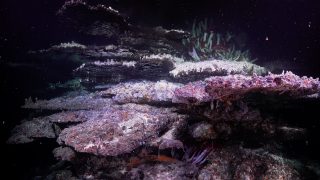
GULF OF CALIFORNIA, MEXICO – While exploring hydrothermal vent and cold seep environments, Dr. Mandy Joye (University of Georgia), and her interdisciplinary research team discovered large venting mineral towers that reach up to 23 meters in height and 10 meters across. These towers featured numerous volcanic flanges that create the illusion of looking at a mirror when observing the superheated (366oC) hydrothermal fluids beneath them. The minerals across the features were laden with metals and the fluids were highly sulfidic, yet these sites were teeming with biodiversity and potentially novel fauna.
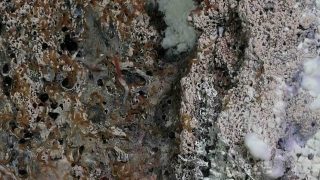
“We discovered remarkable towers where every surface was occupied by some type of life. The vibrant colors found on the ‘living rocks’ was striking, and reflects a diversity in biological composition as well as mineral distributions,” said Dr. Joye. “This is an amazing natural laboratory to document incredible organisms and better understand how they survive in extremely challenging environments. Unfortunately, even in these remote and beautiful environments we saw copious amounts of trash including fishing nets, deflated Mylar balloons, and even a discarded Christmas trees. This provided a stark juxtaposition next to the spectacular mineral structures and biodiversity.”
The expedition was an unprecedented study of hydrothermal and gas plumes, with researchers using advanced technology including 4K deep-sea underwater cameras and radiation tracking devices, as well as sediment and fluid samplers working via a remotely operated vehicle, ROV SuBastian. To get a true measure of methane and other volatile substances existing in the deep sea, scientists need to capture the samples at the source. The scientists were able to do this with a unique osmo sampler, a device that draws hydrothermal fluids into small capillary-like tubing, mounted onto the ROV. Several other in-situ experiments were performed, including a high throughput water filtration for viruses that allowed the team to reduce processing bias.
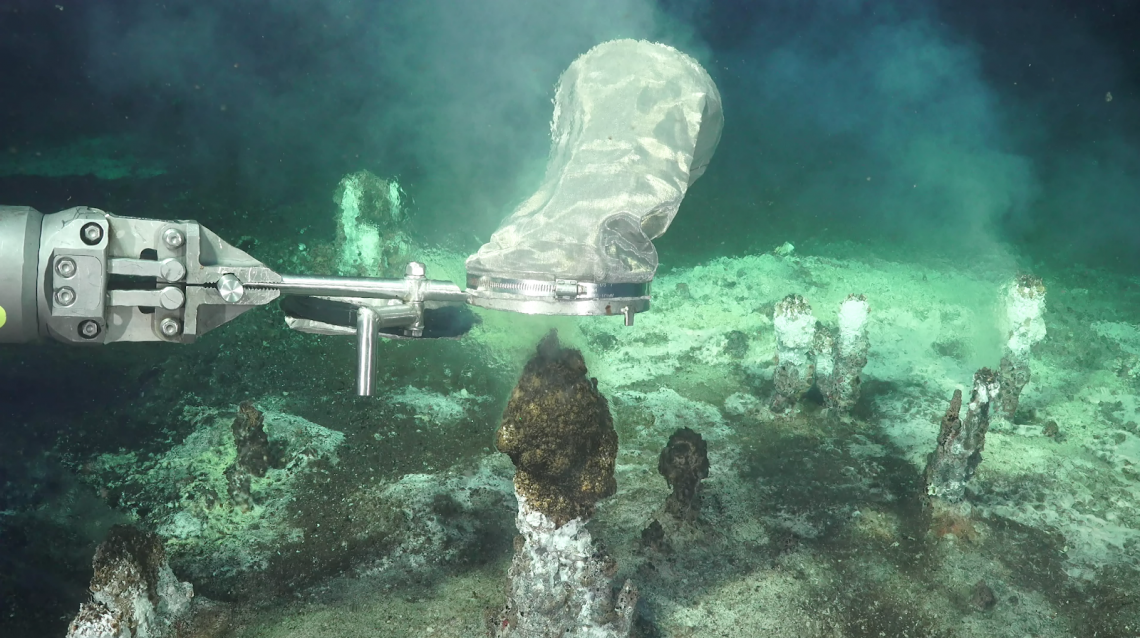
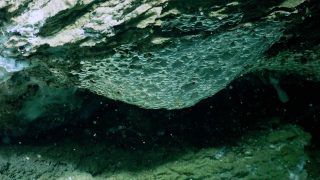
From super-hot hydrothermal vents to slowly discharging cold seeps, the common thread of the sample collections involved studies of methane cycling. Hydrothermal fluids and gas plume samples all contained highly elevated concentrations of methane and surface-breaching methane hydrate mounds. Methane is a potent atmospheric greenhouse gas, 30 times the strength of carbon dioxide, and this study will advance the knowledge of the biological storage for methane in water column and sediment systems.
“It is a different world down there. Each dive feels like floating into a science fiction film,” said Schmidt Ocean Institute Cofounder Wendy Schmidt. “The complex layers of data we’ve collected aboard Falkor during this expedition will help tell the story of this remote place and bring it to public attention. Witnessing these remarkable oceanscapes, we are reminded that although they are out of our everyday sight, they are hardly immune from human impact. Our hope is to inspire people to learn more and care more about our ocean.”
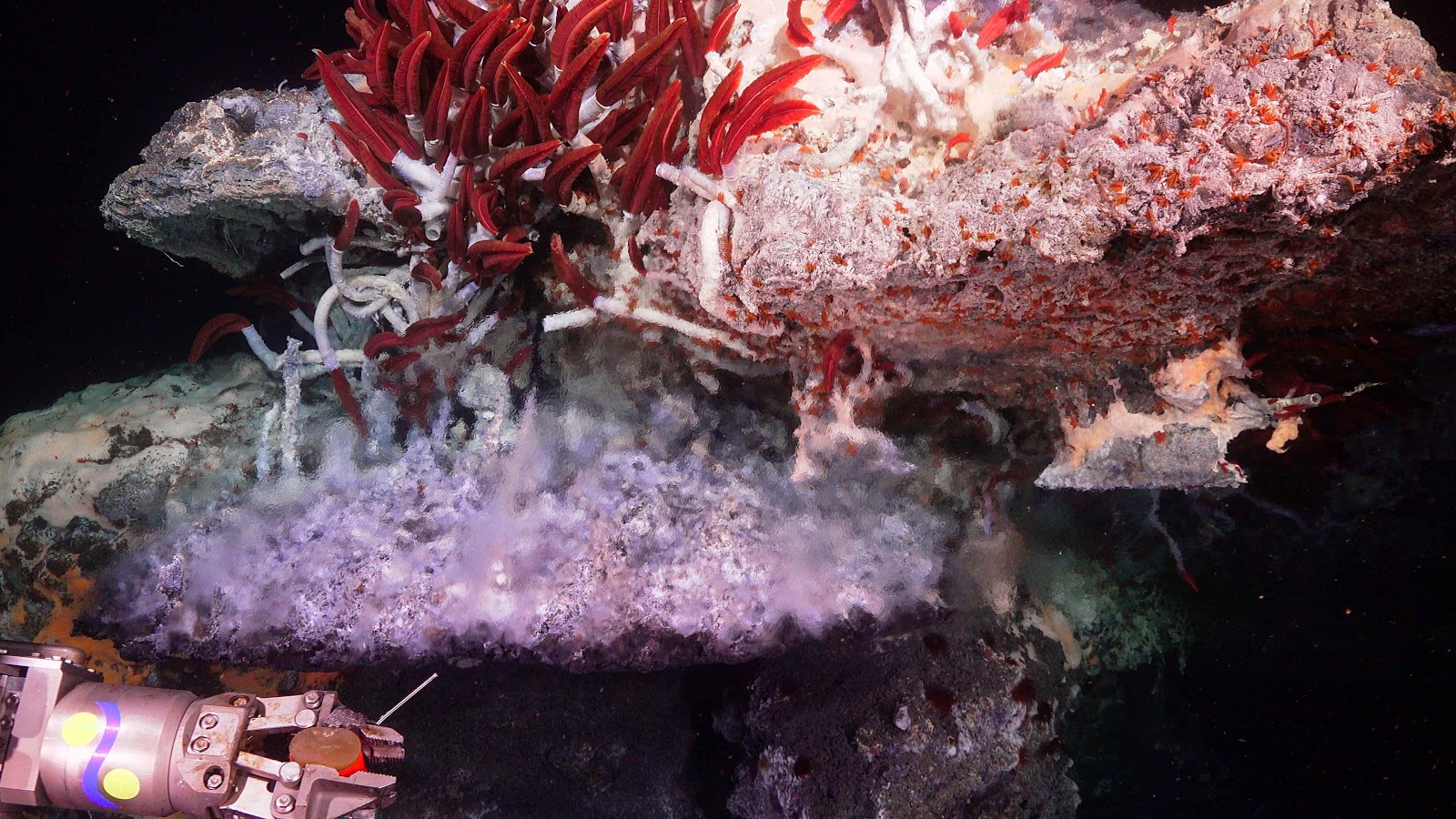
The team will now spend the next few months analyzing samples and plans to publicly share the results. As the different data sets are synthesized, scientists will generate a more complete understanding of the Gulf of California system. This understanding will be applicable to oceanic environments around the globe, as well as allow scientists to identify and frame exciting new questions.
This work would not have been possible without the considerate authorization of the Mexican Secretariat of Foreign Affairs (Secretaría de Relaciones Exteriores) to allow for marine scientific research to be conducted in their waters.
————-
You can view some of the amazing species discoveries in 4K here. Additional high resolution images and Broll are available. You can learn more at https://schmidtocean.org/cruise/linking-microbial-communities-environmental-drivers/
